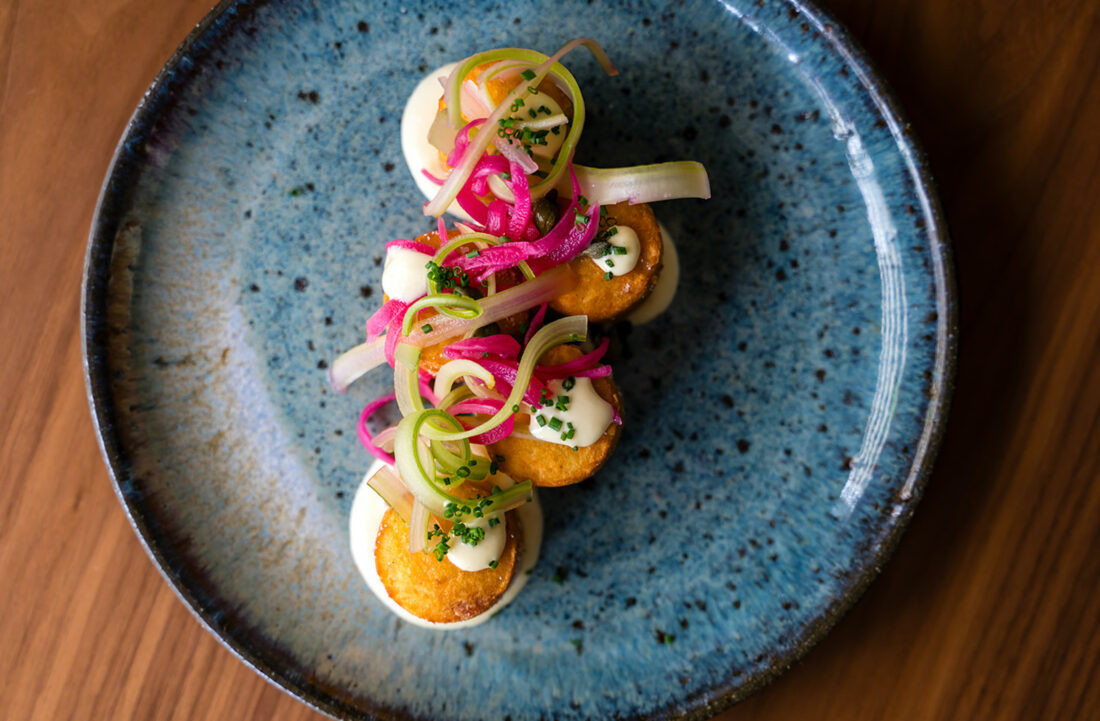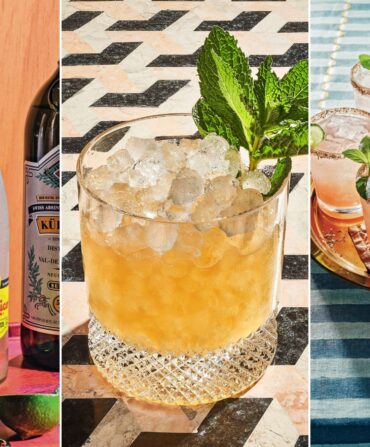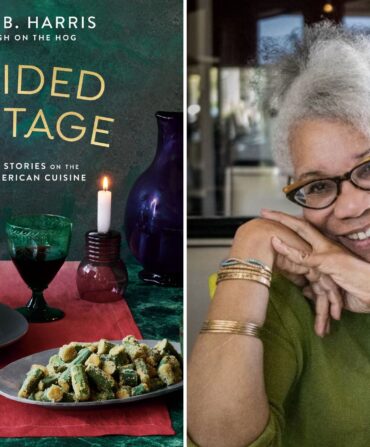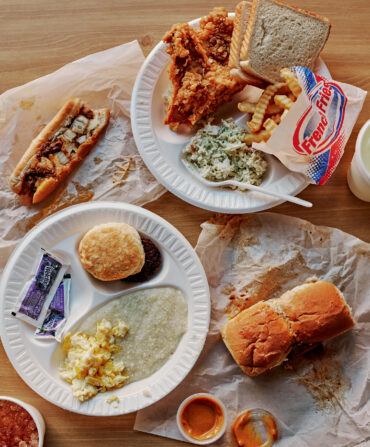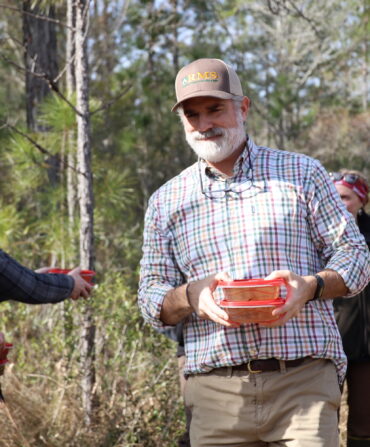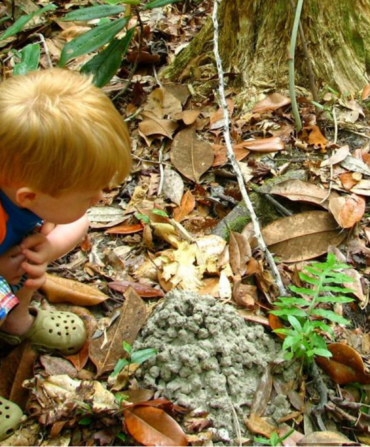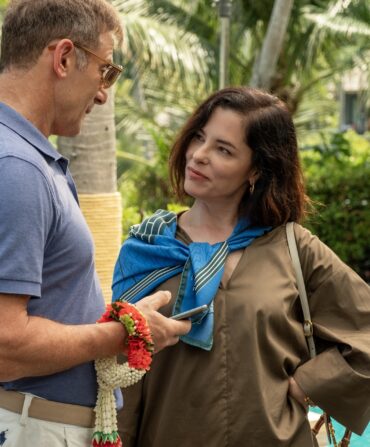In the kitchens at Luminosa, an Appalachia-meets-Italy restaurant inside Asheville’s twenties-era Flat Iron Hotel, jars of vinegar and stacked tupperware containers of all things pickled and pickling tower nearly to the ceiling. Chef de cuisine Sean McMullen, the orchestrator of this madness, ticks off the contents: Ramp coins float in a purplish liquid, pink radish slices are lacto-fermenting in a salt brine, and the sliced-off tops of strawberries bob in what will soon be vinegar.
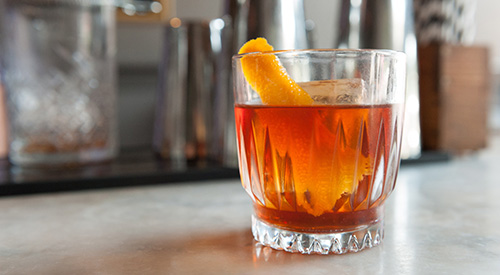
“My interest in pickling comes from growing up in a family that canned,” McMullen says. “We always had to have our store of vegetables for the wintertime.” He remembers dabbling in the practice with his grandmother while growing up in Hendersonville, North Carolina, but once he honed his chef chops, the interest really took off. “Some people find it tedious or mundane, so I always kept up the pickling wherever I was working.”
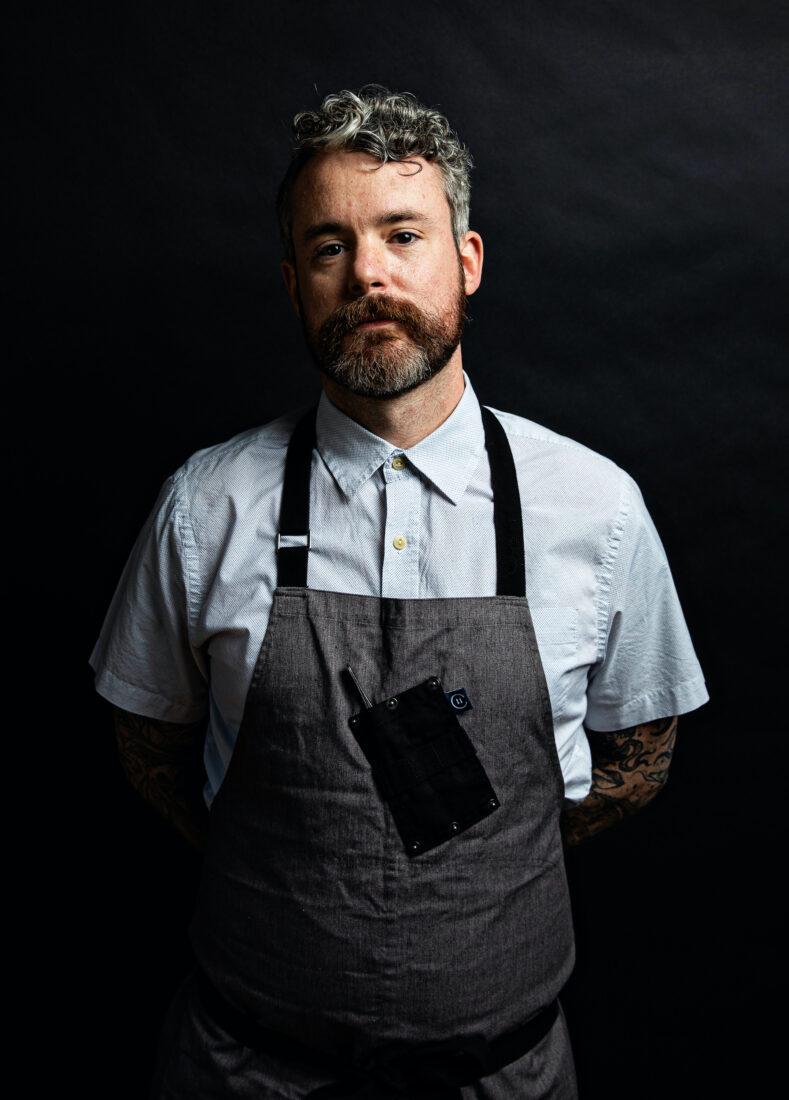
At Luminosa, which opened in May 2024, pickling also plays into his and executive chef Graham House’s sustainability ethos. “Making vinegars and making pickles helps you take what would typically be viewed as waste and turn it into another really interesting ingredient instead,” McMullen says. Similarly, it allows them to keep spring or summer vegetables on the menu year-round in line with their commitment to local sourcing.
Below, find assorted pickling tips gleaned from McMullen’s years of mastering his craft—and watch a highlight reel here.
There are two main ways to pickle.
There’s the method most are familiar with—also called quick pickling—which relies on vinegar. “This is a normal pickling brine,” McMullen says. “I typically do a one and a half to one vinegar to water ratio.” When pickling vegetables, he likes to liberally season them with salt beforehand and let that pull some of the moisture out, to help preserve their crispness. “It’s kind of ‘choose your own adventure’ as long as you have that base understanding of how much vinegar to water you need,” he says. “You can build a pickling brine with any aromatics you want, like fresh peppers or chili flakes.” Just be aware that quick-pickled veggies are not shelf-stable and should be stored in the fridge.
Then there’s something called lacto-fermentation. “This is just taking vegetables and adding salt to them,” McMullen says. “The natural yeast that’s on these vegetables starts the positive biome, and then they turn into pickles.” Lacto-fermentation can be accomplished with a basic salt brine or by salting and vacuum-sealing the veggie, but because it can pose a health risk if done improperly, outfitting yourself with the proper know-how is essential (more on that below).
You can make your own vinegar, too.
Making vinegar is not difficult, McMullen says. “You just need an airlock, which is a system that lets gas escape from the jar.” Then you need water, a splash of Bragg apple cider vinegar (which has an active “mother” bacterial colony in it), and whatever flavoring agents you want. McMullen uses discarded strawberry tops, foraged wisteria or black locust flowers, and blackberries, to name a few. The stronger you want the flavor of the vinegar to reflect that item, the more of it you should add. “Then you just screw the lid on, put it away in a cool, dry place, and forget about it for a week or so,” he says. “And then you have vinegar.” To harvest it, just strain out the particulate through a cheesecloth or a coffee filter.
Whatever you’re pickling, make sure it’s fresh.
Your pickle is only as good as its origin veggie. “If a vegetable has been sitting for a week, it’s not going to have the texture you want,” McMullen says. “But if it’s straight out of the field, you’re going to keep the integrity of the vegetable in its pickle form.” So get pickling right away, and use high-quality ingredients at every step, like a good sea salt.
What to pickle?
Peruse the farmers’ market and see what you get excited about, McMullen advises. He has pickled everything—cucumbers, okra, bamboo, radishes, ramps, and anything else that catches his eye. And if you’re making your own vinegar, your possibilities expand. “What grows together, goes together,” he says. “I really like ramps in wisteria vinegar, because those are the first plants of spring.
Pickles make everything better.
McMullen’s bounty pays off on Luminosa’s food and drink menu: He serves a pickled bamboo vinaigrette over greens and sunflower seeds, places crunchy lacto-fermented radishes on the charcuterie board as a palate cleanser, and sends cocktail ramps to the bar to garnish the house Manhattan. Anywhere you need tang, crunch, a twist, or something plain old fun, a pickle belongs.
Before you try pickling at home, get educated.
Fermentation is not without health hazards, and for anyone new to the game, McMullen advises a serious self-education. The Art of Fermentation or Wild Fermentation by Sandor Katz—aka the father of American fermentation—are great places to start. “Just read books about pickles and get a base knowledge—and then get into it.”
Garden & Gun has an affiliate partnership with bookshop.org and may receive a portion of sales when a reader clicks to buy a book.


